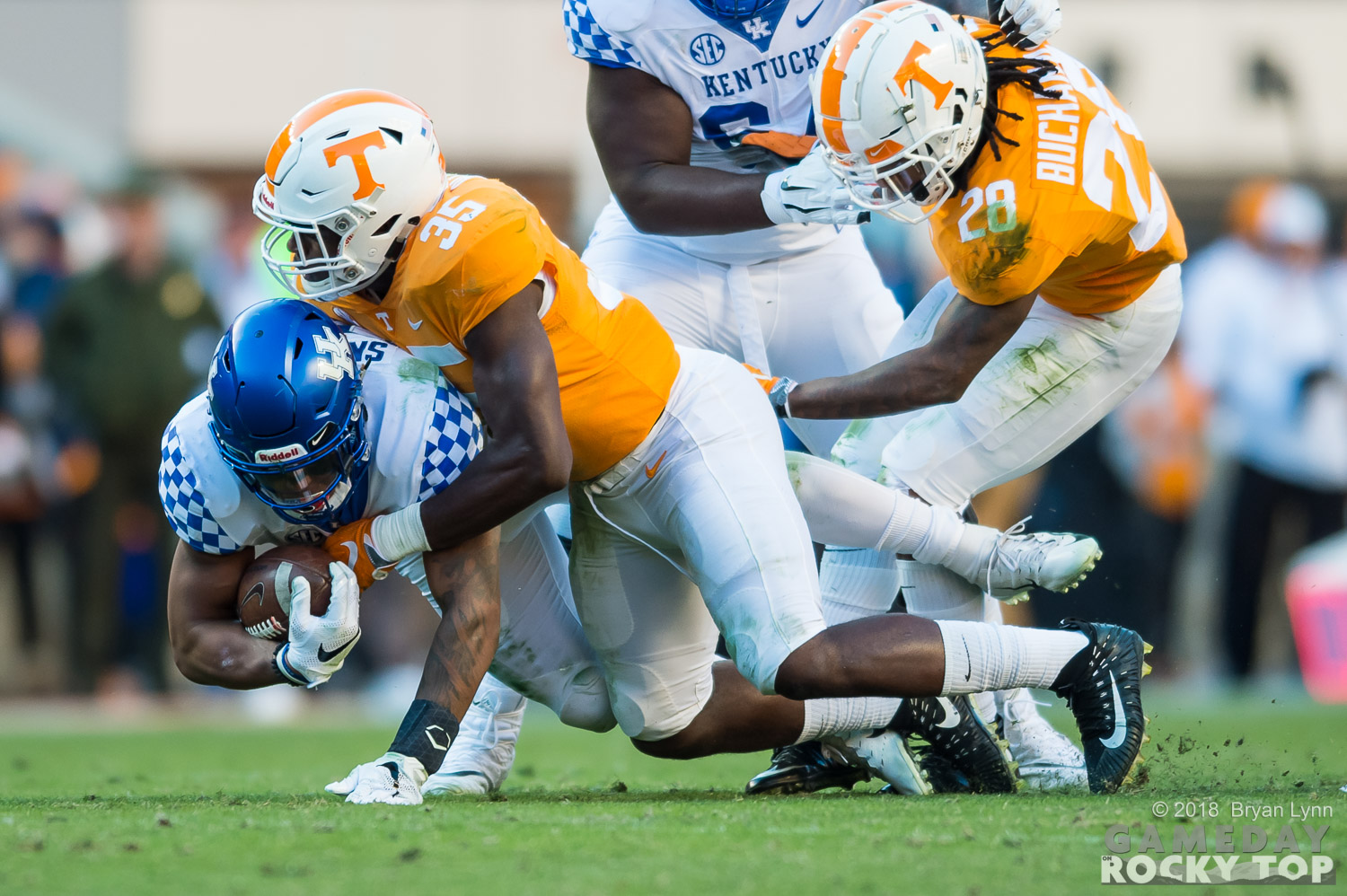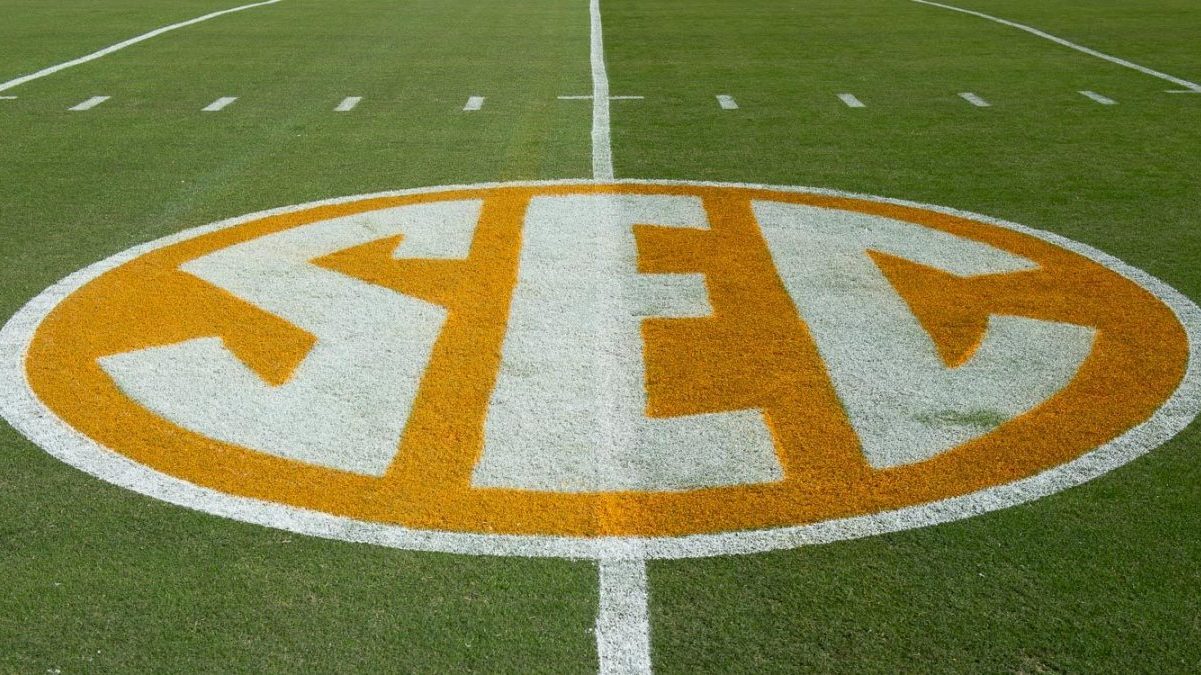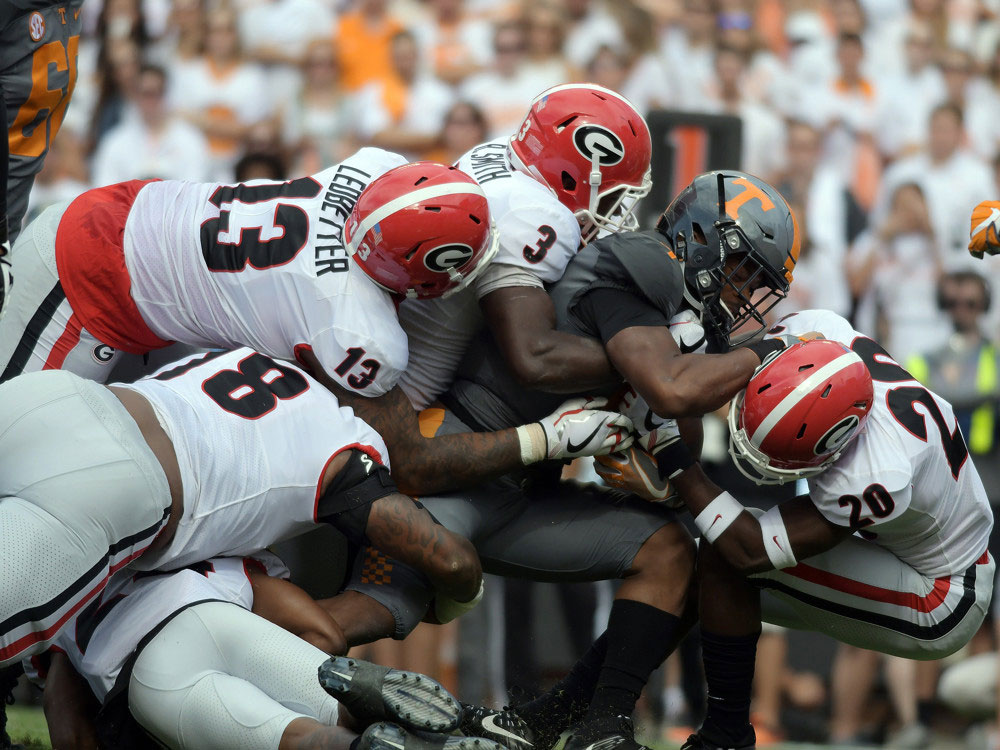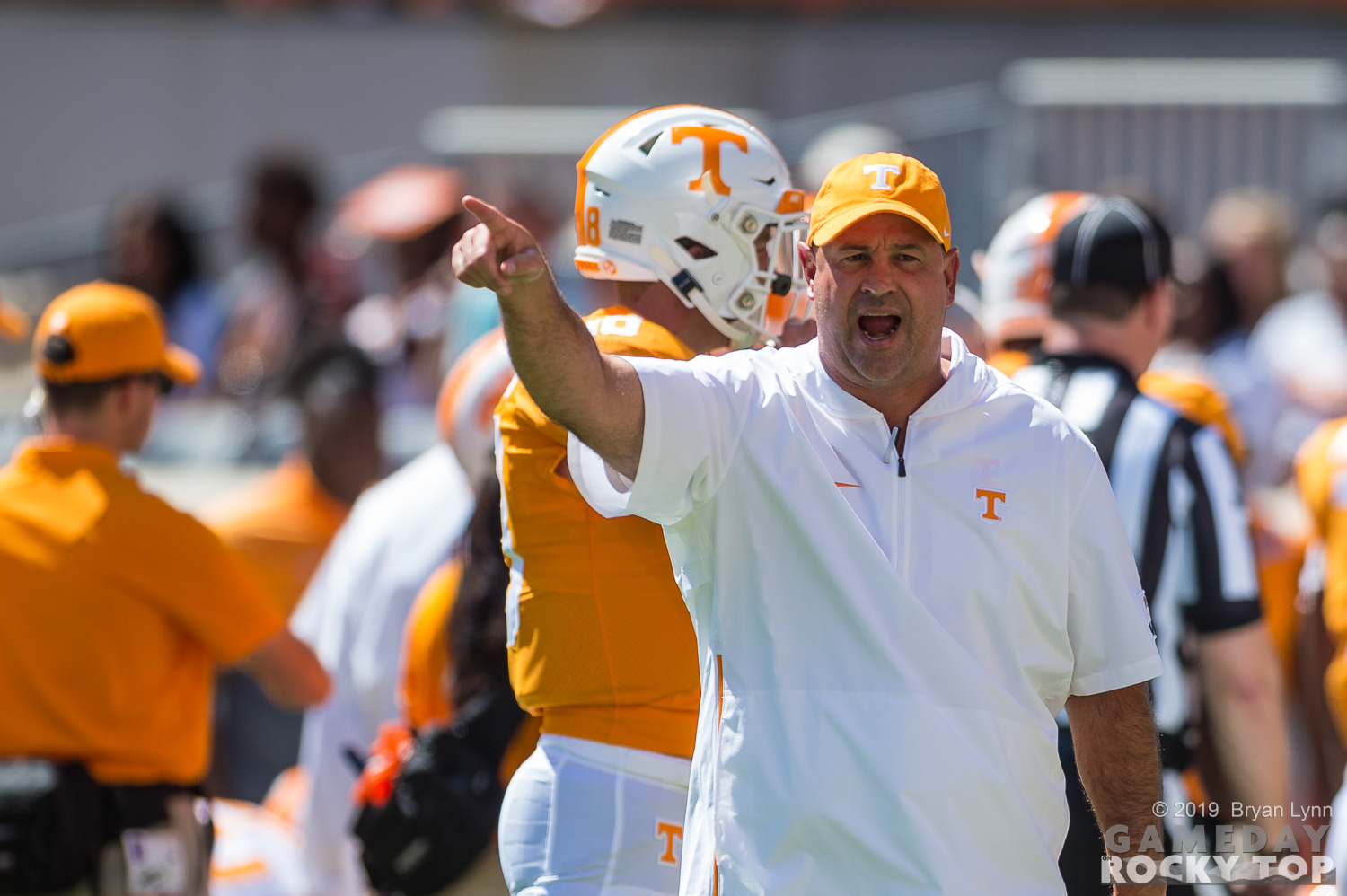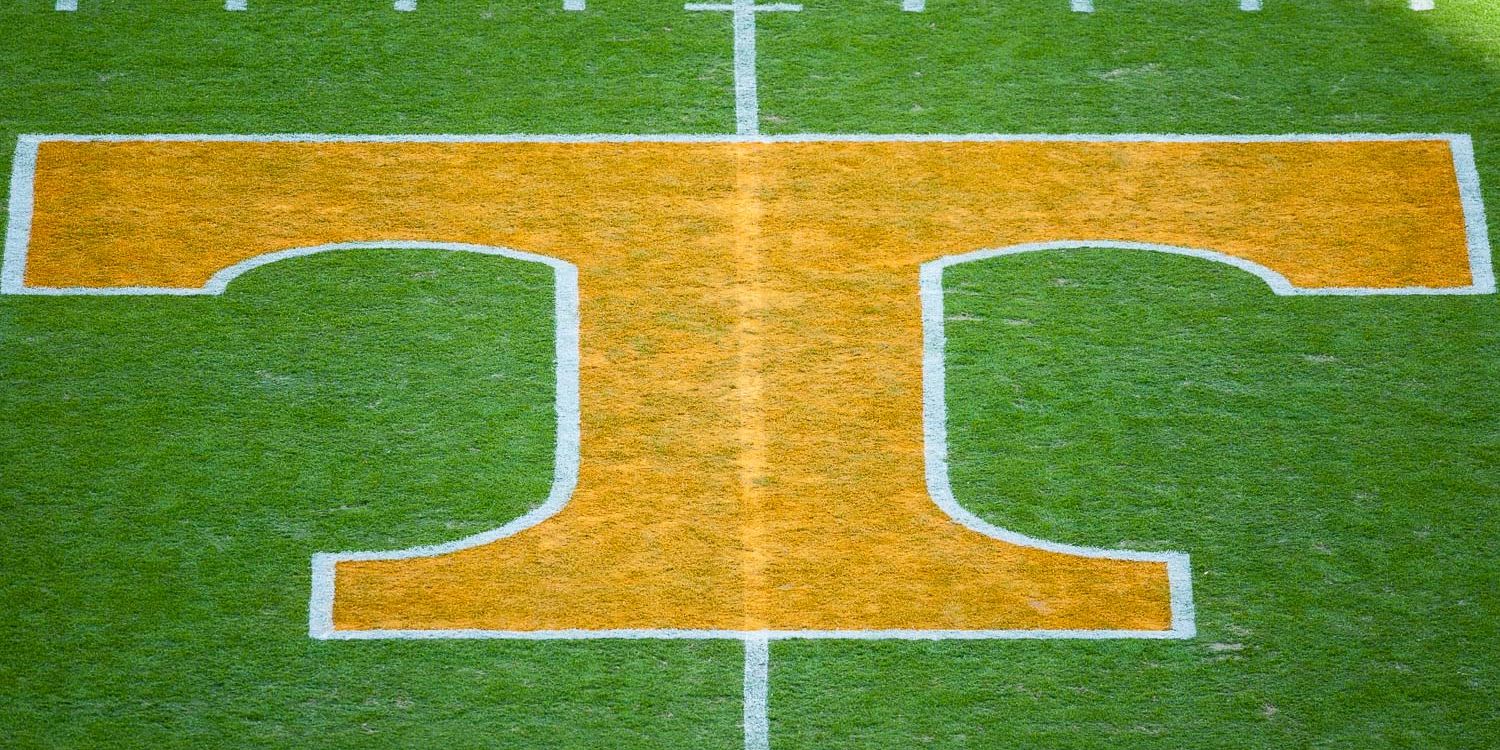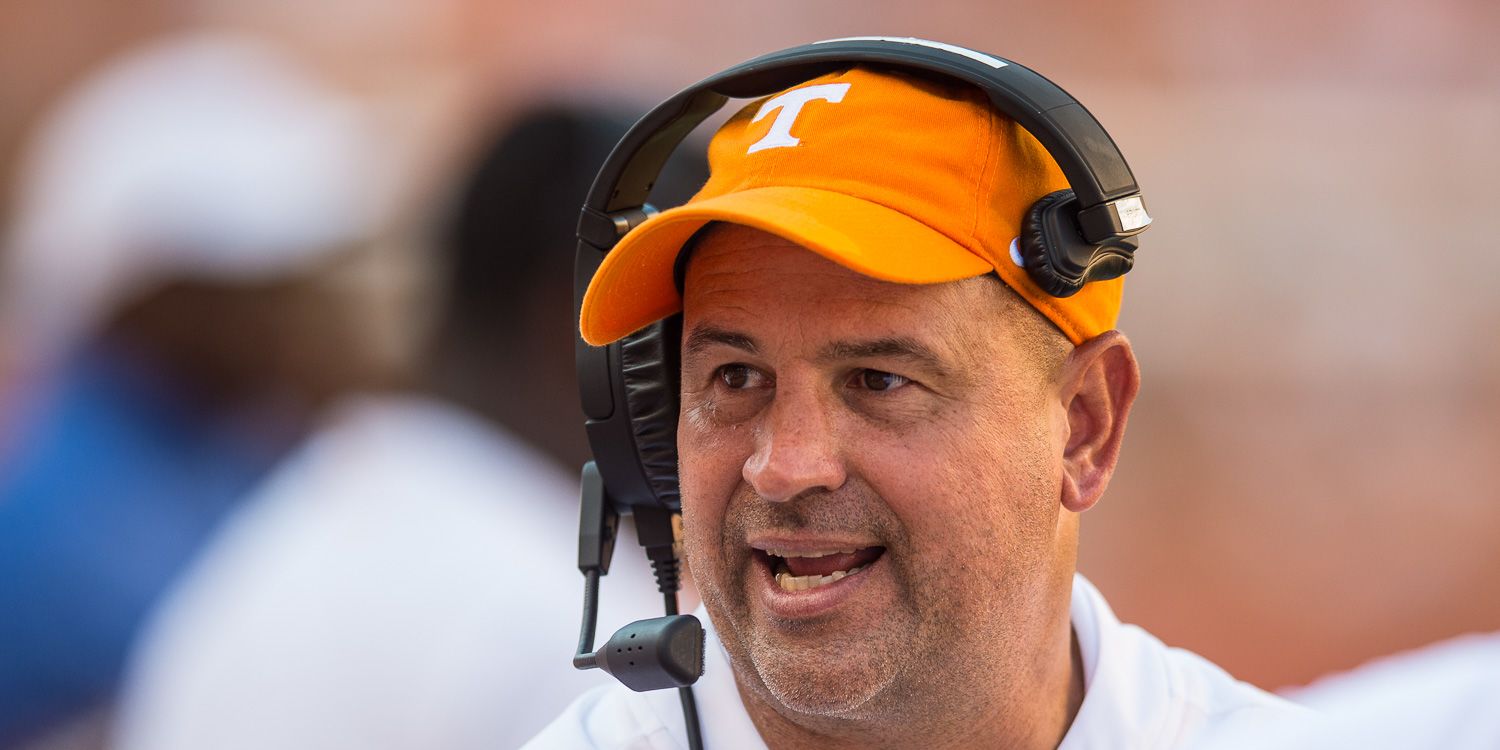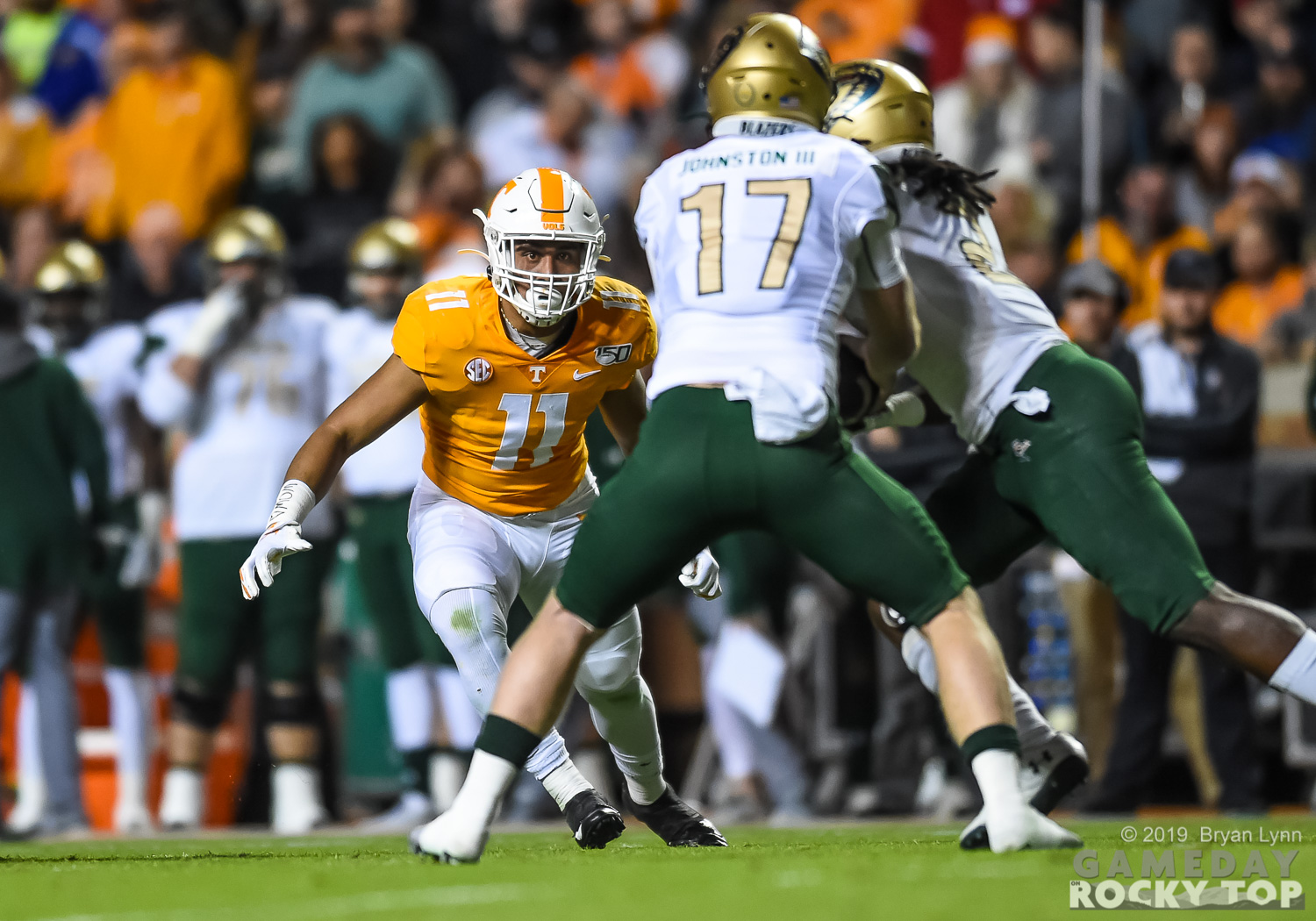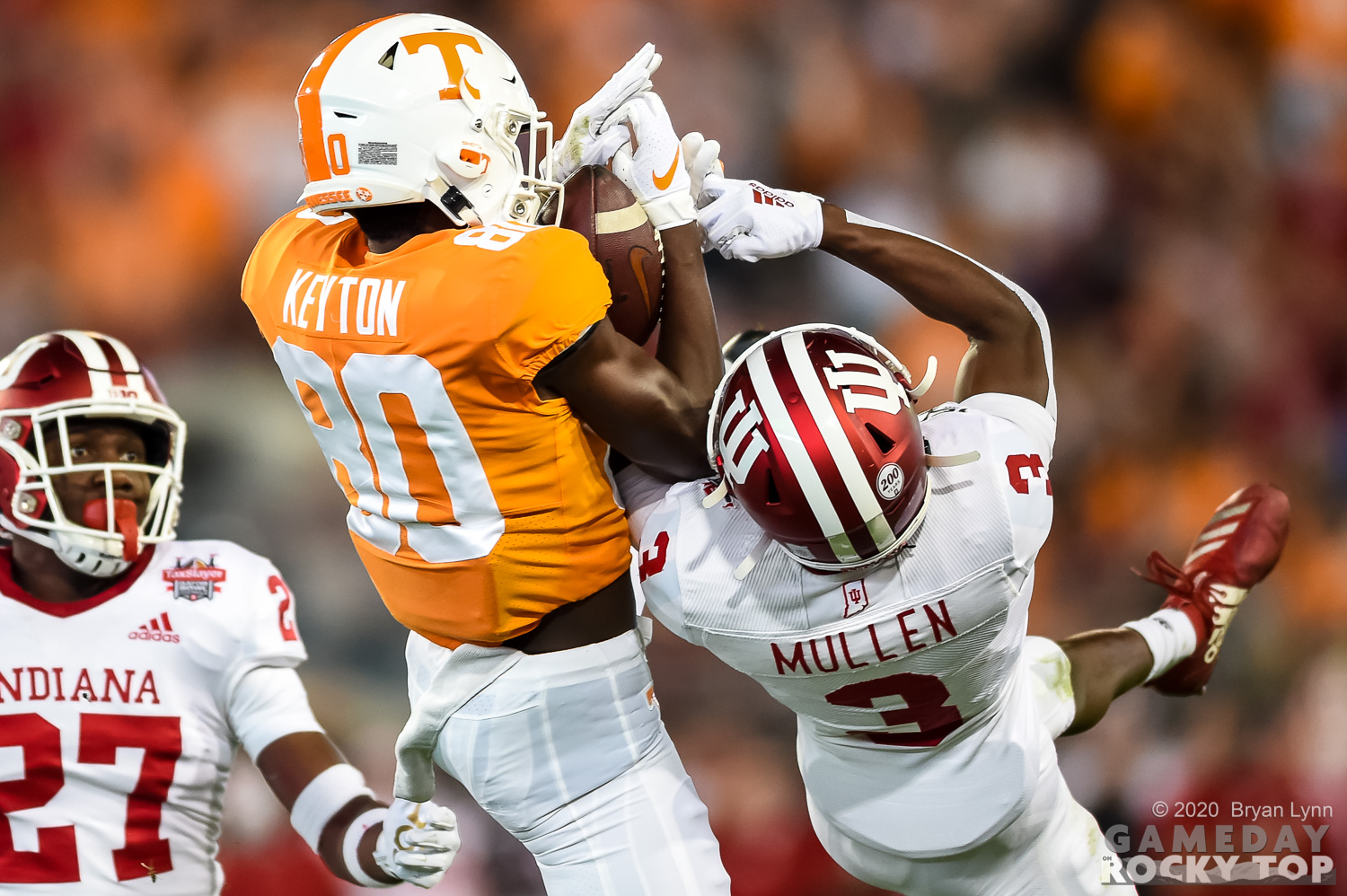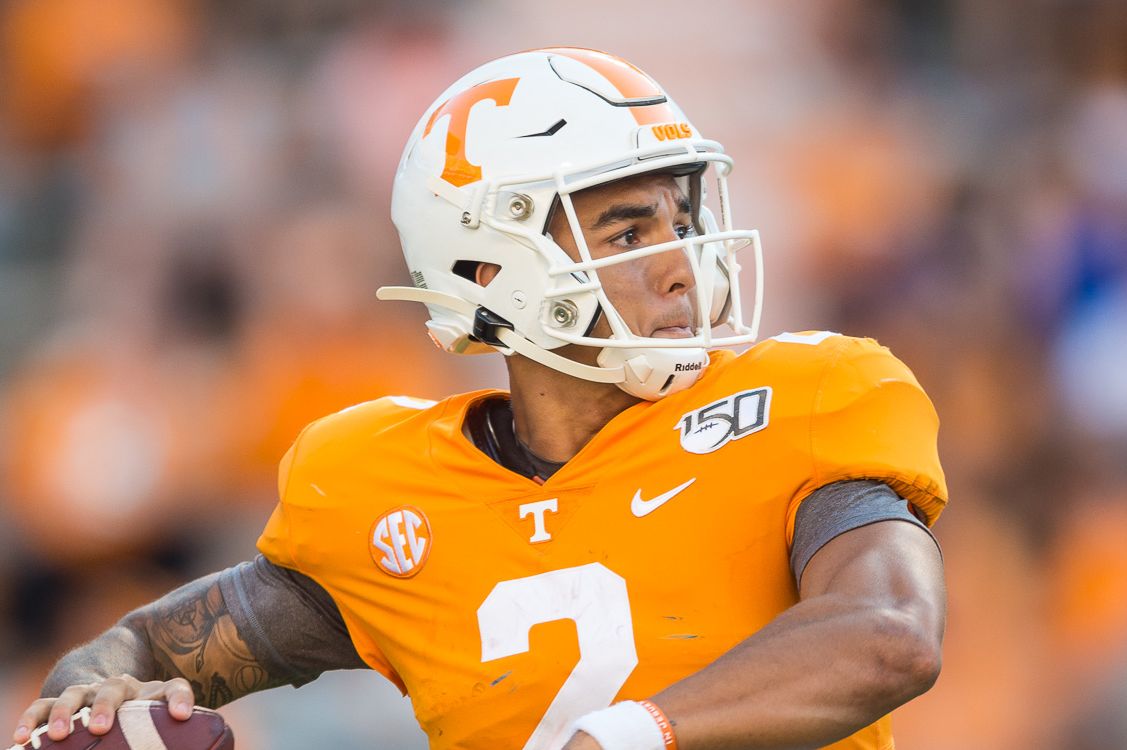The thing I keep coming back to most often – “Georgia’s defense is the best in the country” – is, of course, the most hopeful scenario. So maybe don’t trust it yet; trust it a lot if it shows up well against Alabama, which has the best offense in the country. Stay tuned next week when we get to try to solve that problem.
But by the end of the year, that’s the hope: Georgia’s defense is, in fact, not just the best in the nation, but the best we’ve seen in a while.
The last time we saw anything better, via SP+, was 2017 Alabama. (Mis)matched against the anemic Vol offense in Butch Jones’ final season, Tennessee went for 108 total yards at 2.35 yards per play, and zero offensive points. Before then, the last time Tennessee saw a defense who ended up in that neighborhood was 2012 Florida, Will Muschamp’s eventual Sugar Bowl team. The high-powered Vol offense scored 20 points, but had just 4.72 yards per play, their lowest total of the year before imploding at Vanderbilt.
The 2012 Gators ended the year at 6.6 (points allowed vs the average offense) in defensive SP+. 2017 Alabama finished at 5.6. Georgia was at 6.2 before playing the Vols, actually coming down a bit to 7.1.
The Vols gained 214 yards on Georgia last week at 3.40 yards per play. That’s clearly not going to get it done against an elite team, and is just as indicative of the outcome as turning the ball over three times in the second half.
As a result, Tennessee’s defense faced 77 plays, its second-highest total in the last two years. The Vols allowed 44 points (37 for Georgia’s offense), got hurt over the middle, and don’t come out of Athens carrying a world of confidence.
But when you put all the numbers on the table this season, and consider what’s happening around the rest of the league? Pick whichever one makes you feel best, because they both might still be true after the Georgia game:
- Tennessee might have the second best defense in the SEC
- Tennessee might have its best defense in 10+ years
In SP+, both are true right now. Georgia’s otherworldly defense leads the nation at 7.1 in SP+; Ohio State is number two at 14.1, a full seven points behind. The field gets more crowded from there, but among SEC defenses after three weeks and plenty of points:
| Team | SP+ Defense | National Rank |
| Georgia | 7.1 | 1 |
| Tennessee | 17.3 | 13 |
| Auburn | 18 | 18 |
| Florida | 19.4 | 20 |
| Alabama | 19.8 | 22 |
| South Carolina | 19.9 | 23 |
| Missouri | 20.5 | 27 |
| Kentucky | 21.2 | 28 |
| Texas A&M | 21.6 | 29 |
| LSU | 22.5 | 37 |
| Arkansas | 26.3 | 58 |
| Ole Miss | 27.7 | 65 |
| Vanderbilt | 27.8 | 66 |
| Mississippi St | 27.9 | 67 |
Tennessee’s defensive rating of 17.3 is a hair ahead of last season’s 17.4, spurred on by a fantastic defensive effort in the six-game winning streak to close 2019. That rating was Tennessee’s best of the decade, which isn’t overly shocking; the 2015 Vol defense came closest at 17.8. What is more shocking is the size of the gap between where the Vols are now and where we’ve been in the last few years:
| Season | SP+ Defense |
| 2009 | 15.5 |
| 2020 | 17.3 |
| 2019 | 17.4 |
| 2015 | 17.8 |
| 2011 | 18.8 |
| 2014 | 19.9 |
| 2010 | 23.6 |
| 2016 | 25.2 |
| 2017 | 25.7 |
| 2013 | 26.1 |
| 2012 | 28.3 |
| 2018 | 28.9 |
In the post-Fulmer era, only Monte Kiffin’s 2009 unit faired better than last year, and this year’s potential. And, in the spirit of having a chance to win every week, that’s a group – 2015, 2019, 2009 – you want to be in. Much better than the company Tennessee’s defense kept in 2016-18.
So maybe we’re not ready to think of the 2020 Vol defense as elite, or even “very good”. But if the numbers hold weight, they’ll play their way into at least that second category.
Which brings us to Kentucky.
Fresh off gaining 157 total yards at 2.96 yards per play against Mississippi State – six interceptions, 24 points – the Cats head to Knoxville. Last year Kentucky scored 13 points against us, seven the year before that. In winning four straight after losing to us in 2019, Kentucky scored 38, 50, 45, and 37 points. In winning three straight after losing to us in 2018, Kentucky scored 34, 56, and 27. Jeremy Pruitt’s defense has done some of its very best work against Kentucky.
Tennessee’s offense has its own demons to exorcise, and I’m not sure how much of that will take place the next two weeks. But if Tennessee’s defense is simply as good as statistically and historically advertised? They can carry the day against a team like Kentucky. And along the way, might start getting a little more credit and higher expectations.
